Abstract
A prominent feature of behavior-analytic research has been the use of single-subject designs. We examined sport psychology journals and behavioral journals published during the past 30 years, and located 40 studies using single-subject designs to assess interventions for enhancing the performance of athletes and coaches. In this paper, we summarize that body of research, discuss its strengths and limitations, and identify areas for future research.
Keywords: single-subject research, sport psychology, behavioral athletics, behavioral sport psychology
Full text
PDF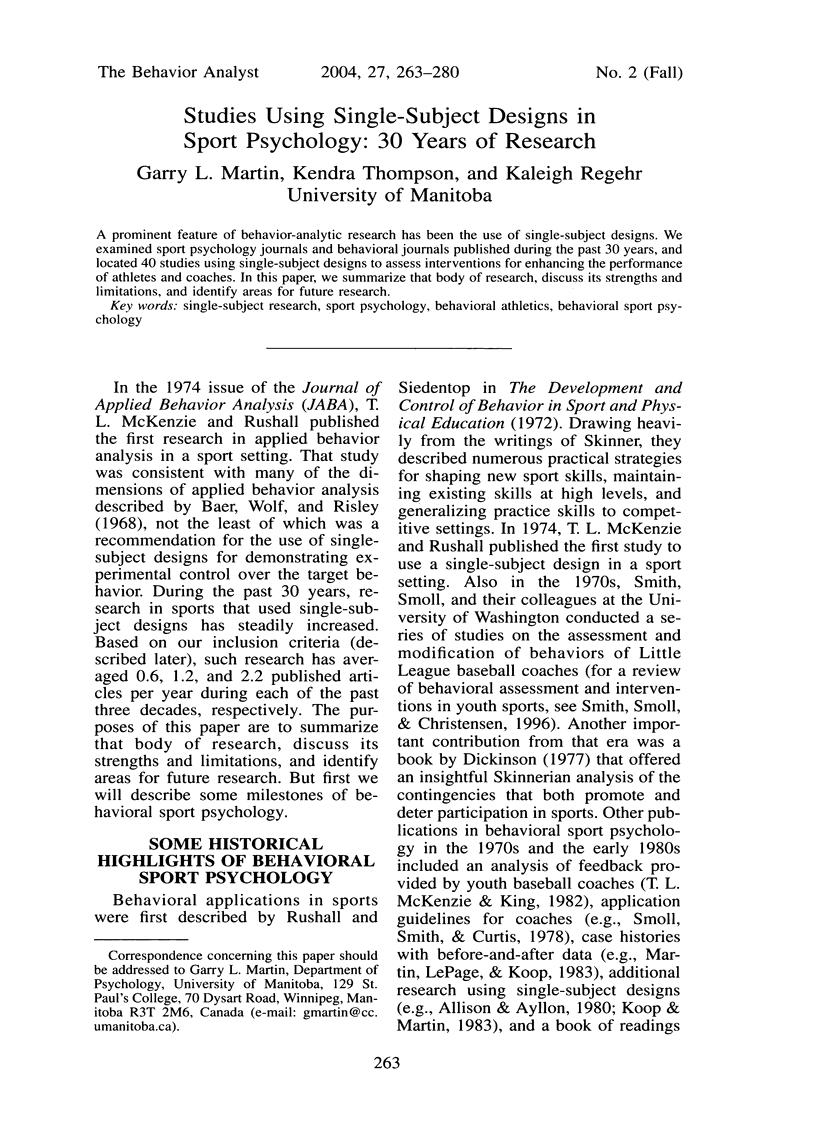
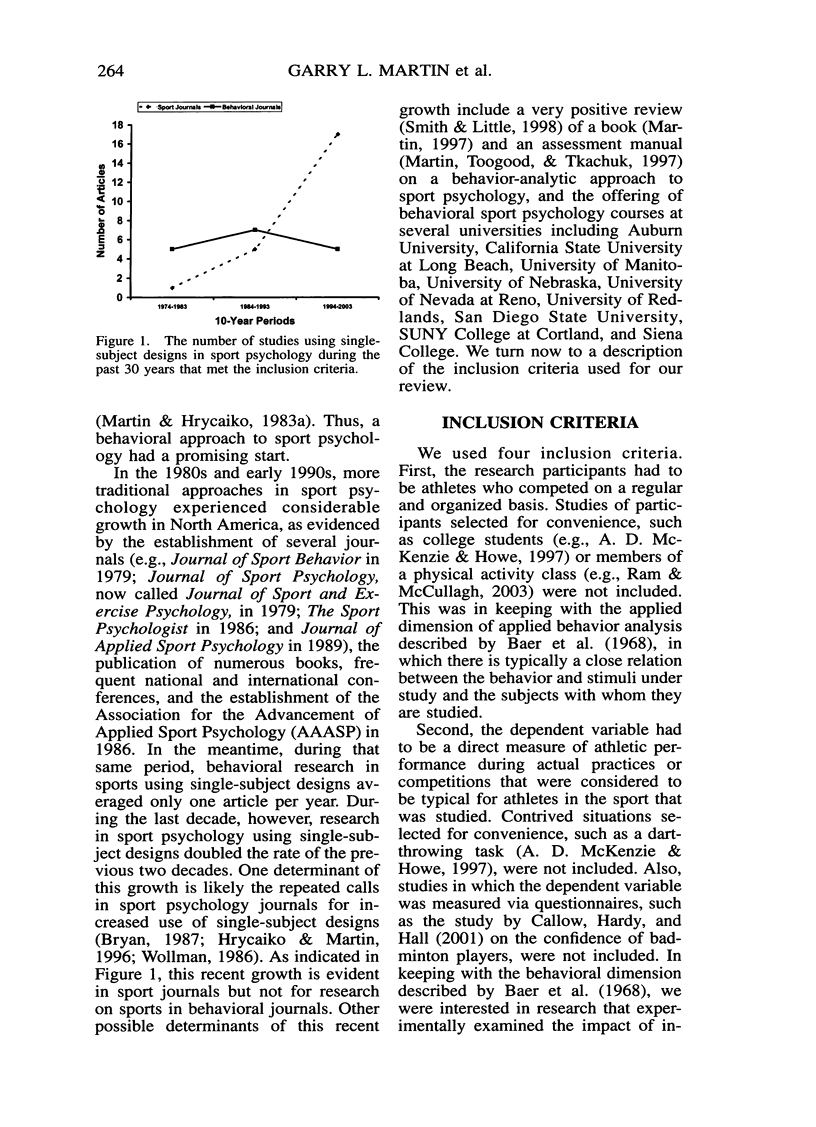


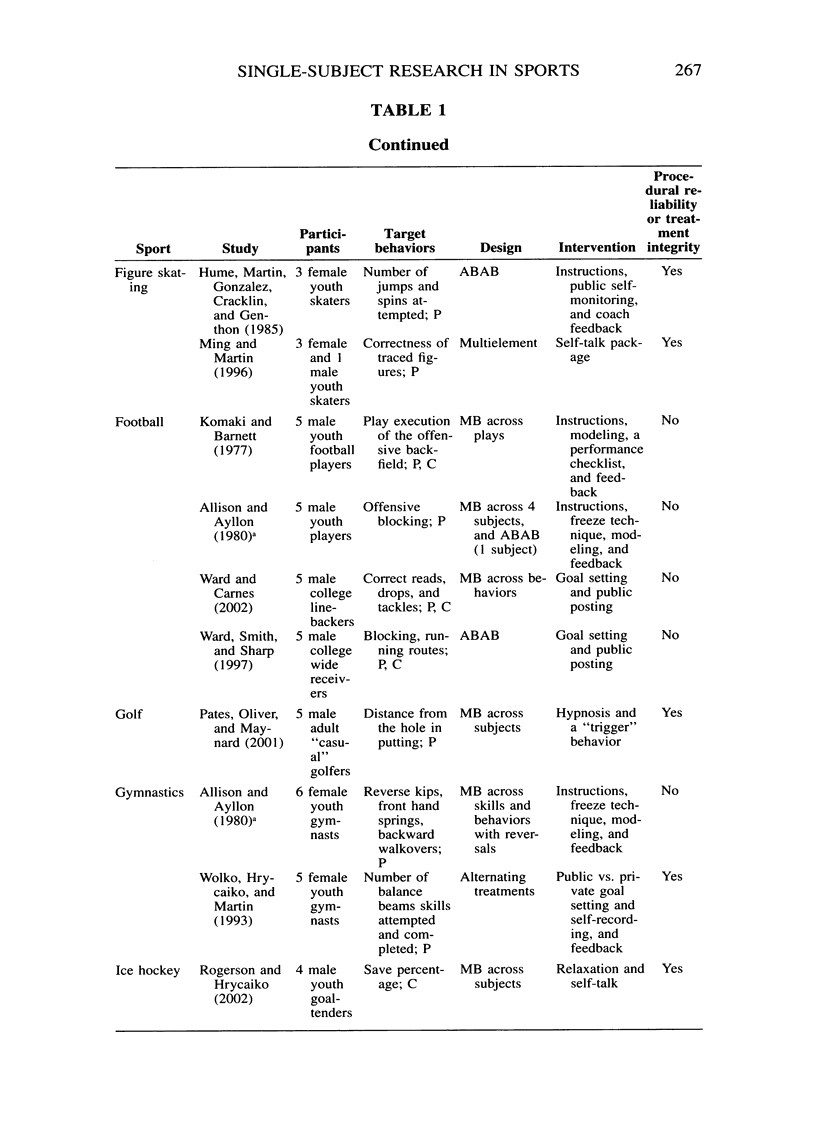
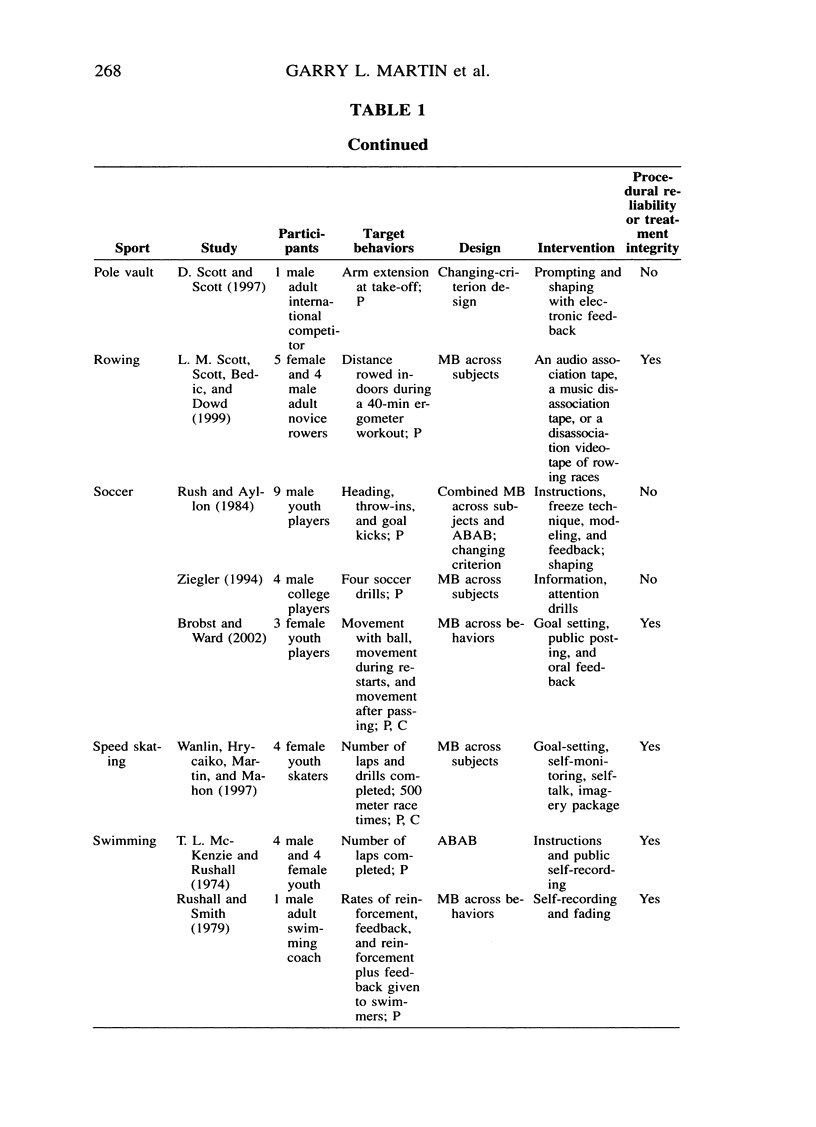




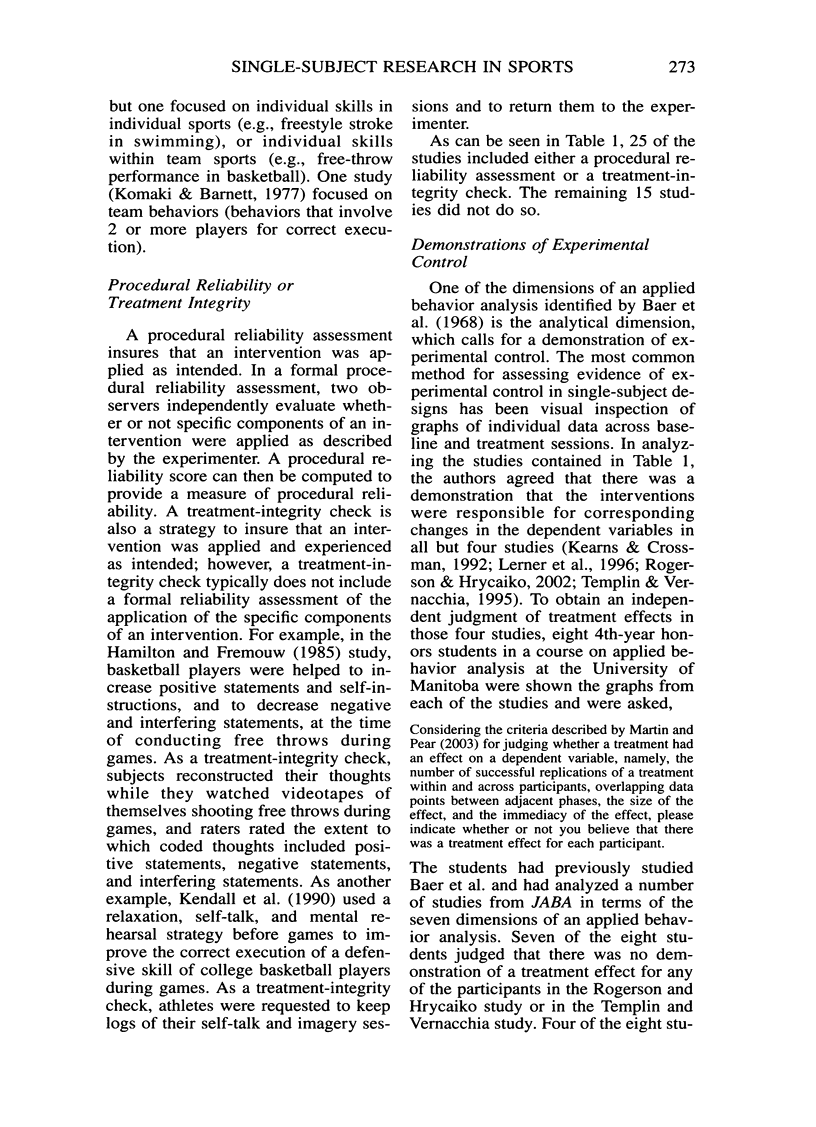

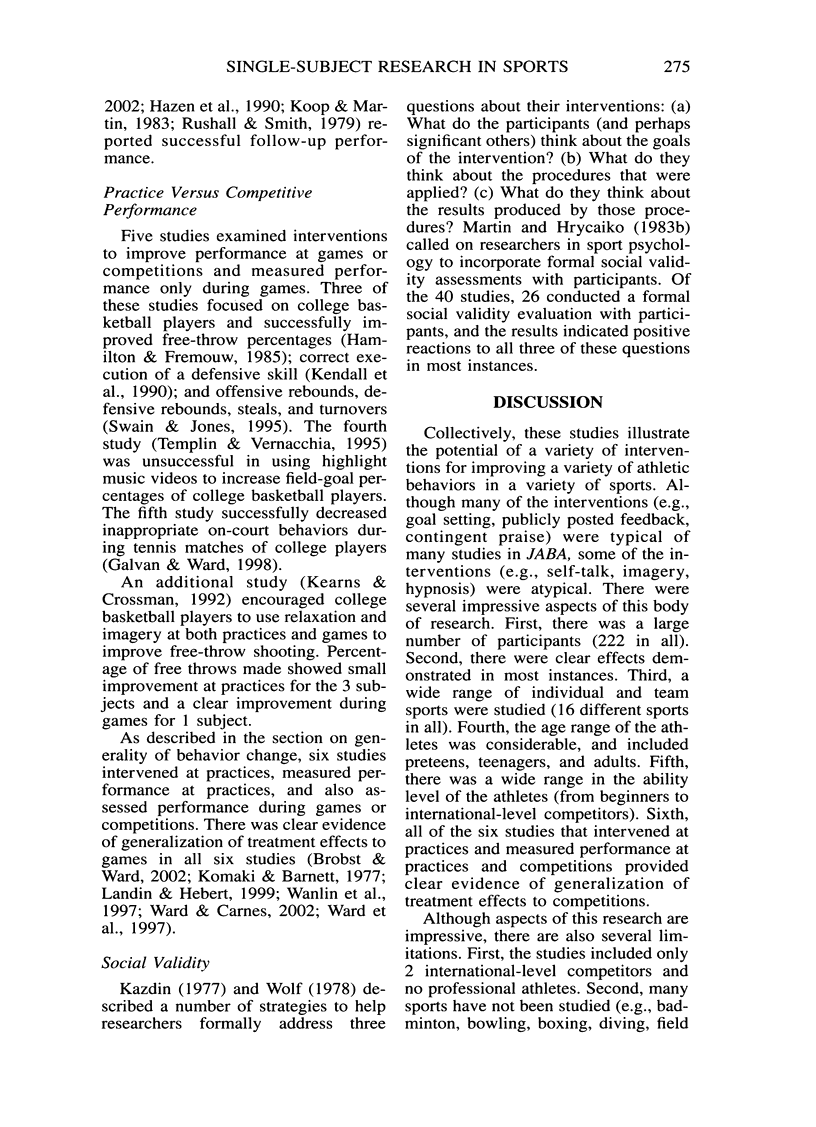

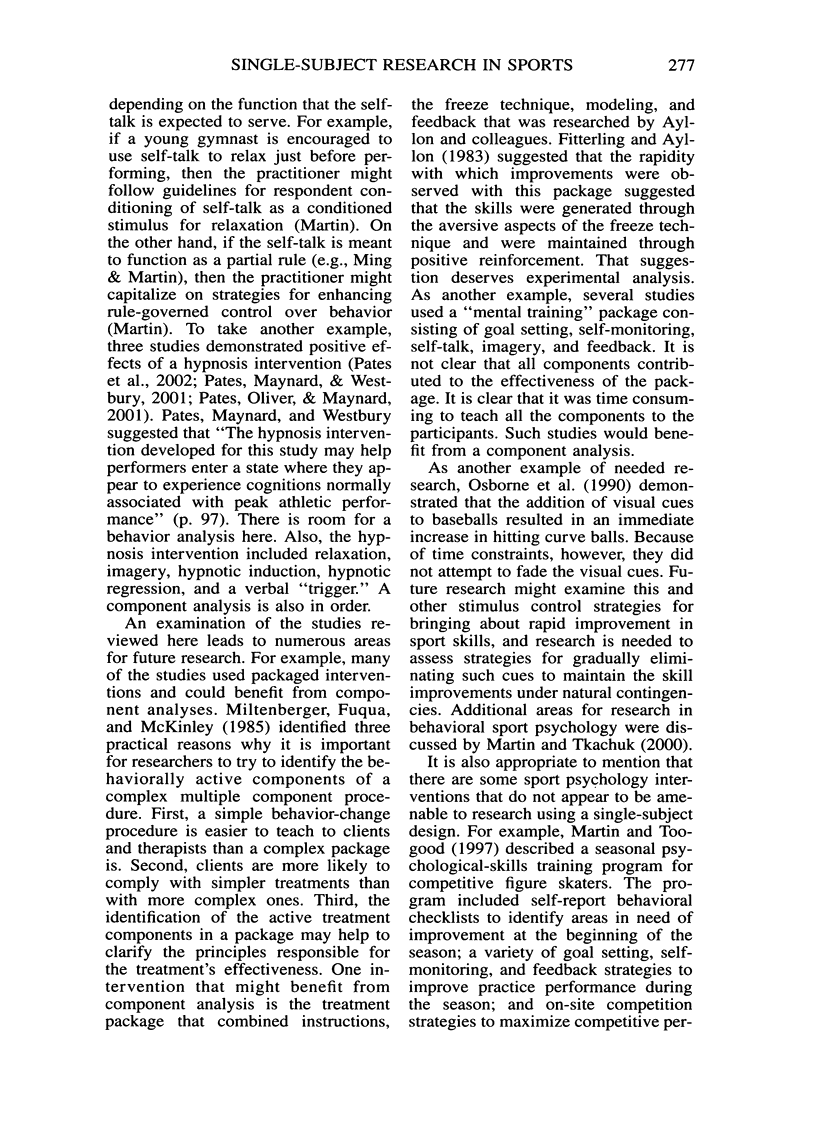
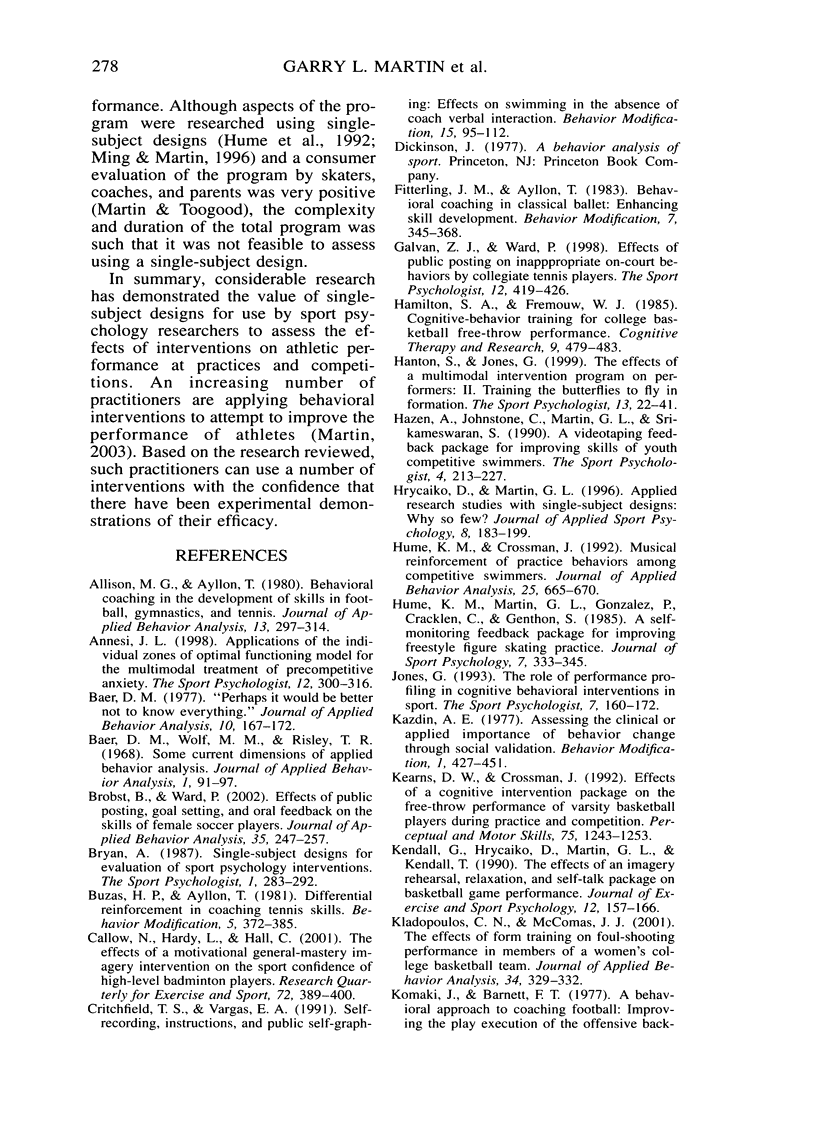

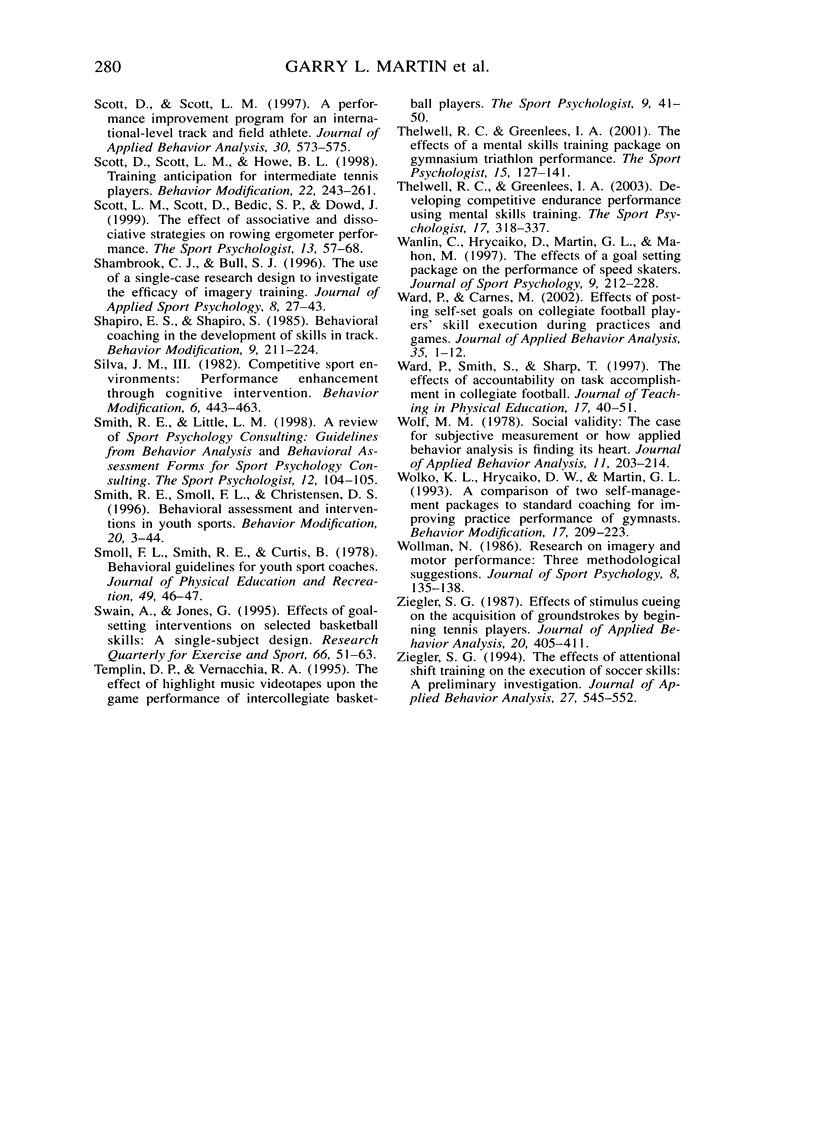
Selected References
These references are in PubMed. This may not be the complete list of references from this article.
- Allison M. G., Ayllon T. Behavioral coaching in the development of skills in football, gymnastics, and tennis. J Appl Behav Anal. 1980 Summer;13(2):297–314. doi: 10.1901/jaba.1980.13-297. [DOI] [PMC free article] [PubMed] [Google Scholar]
- Baer D. M. "Perhaps it would be better not to know everything.". J Appl Behav Anal. 1977 Spring;10(1):167–172. doi: 10.1901/jaba.1977.10-167. [DOI] [PMC free article] [PubMed] [Google Scholar]
- Baer D. M., Wolf M. M., Risley T. R. Some current dimensions of applied behavior analysis. J Appl Behav Anal. 1968 Spring;1(1):91–97. doi: 10.1901/jaba.1968.1-91. [DOI] [PMC free article] [PubMed] [Google Scholar]
- Brobst Brandilea, Ward Phillip. Effects of public posting, goal setting, and oral feedback on the skills of female soccer players. J Appl Behav Anal. 2002 Fall;35(3):247–257. doi: 10.1901/jaba.2002.35-247. [DOI] [PMC free article] [PubMed] [Google Scholar]
- Callow N., Hardy L., Hall C. The effects of a motivational general-mastery imagery intervention on the sport confidence of high-level badminton players. Res Q Exerc Sport. 2001 Dec;72(4):389–400. doi: 10.1080/02701367.2001.10608975. [DOI] [PubMed] [Google Scholar]
- Hume K. M., Crossman J. Musical reinforcement of practice behaviors among competitive swimmers. J Appl Behav Anal. 1992 Fall;25(3):665–670. doi: 10.1901/jaba.1992.25-665. [DOI] [PMC free article] [PubMed] [Google Scholar]
- Kearns D. W., Crossman J. Effects of a cognitive intervention package on the free-throw performance of varsity basketball players during practice and competition. Percept Mot Skills. 1992 Dec;75(3 Pt 2):1243–1253. doi: 10.2466/pms.1992.75.3f.1243. [DOI] [PubMed] [Google Scholar]
- Kladopoulos C. N., McComas J. J. The effects of form training on foul-shooting performance in members of a women's college basketball team. J Appl Behav Anal. 2001 Fall;34(3):329–332. doi: 10.1901/jaba.2001.34-329. [DOI] [PMC free article] [PubMed] [Google Scholar]
- Komaki J., Barnett F. T. A behavioral approach to coaching football: improving the play execution of the offensive backfield on a youth football team. J Appl Behav Anal. 1977 Winter;10(4):657–664. doi: 10.1901/jaba.1977.10-657. [DOI] [PMC free article] [PubMed] [Google Scholar]
- Koop S., Martin G. L. Evaluation of a coaching strategy to reduce swimming stroke errors with beginning age-group swimmers. J Appl Behav Anal. 1983 Winter;16(4):447–460. doi: 10.1901/jaba.1983.16-447. [DOI] [PMC free article] [PubMed] [Google Scholar]
- McKenzie T. L., Rushall B. S. Effects of self-recording on attendance and performance in a competitive swimming training environment. J Appl Behav Anal. 1974 Summer;7(2):199–206. doi: 10.1901/jaba.1974.7-199. [DOI] [PMC free article] [PubMed] [Google Scholar]
- Osborne K., Rudrud E., Zezoney F. Improved curveball hitting through the enhancement of visual cues. J Appl Behav Anal. 1990 Fall;23(3):371–377. doi: 10.1901/jaba.1990.23-371. [DOI] [PMC free article] [PubMed] [Google Scholar]
- doi: 10.1901/jaba.1997.30-573. [DOI] [PMC free article] [Google Scholar]
- Scott D., Scott L. M., Howe B. L. Training anticipation for intermediate tennis players. Behav Modif. 1998 Jul;22(3):243–261. doi: 10.1177/01454455980223002. [DOI] [PubMed] [Google Scholar]
- Swain A., Jones G. Effects of goal-setting interventions on selected basketball skills: a single-subject design. Res Q Exerc Sport. 1995 Mar;66(1):51–63. doi: 10.1080/02701367.1995.10607655. [DOI] [PubMed] [Google Scholar]
- Ward Phillip, Carnes Michael. Effects of posting self-set goals on collegiate football players' skill execution during practice and games. J Appl Behav Anal. 2002 Spring;35(1):1–12. doi: 10.1901/jaba.2002.35-1. [DOI] [PMC free article] [PubMed] [Google Scholar]
- Wolf M. M. Social validity: the case for subjective measurement or how applied behavior analysis is finding its heart. J Appl Behav Anal. 1978 Summer;11(2):203–214. doi: 10.1901/jaba.1978.11-203. [DOI] [PMC free article] [PubMed] [Google Scholar]
- Ziegler S. G. Effects of stimulus cueing on the acquisition of groundstrokes by beginning tennis players. J Appl Behav Anal. 1987 Winter;20(4):405–411. doi: 10.1901/jaba.1987.20-405. [DOI] [PMC free article] [PubMed] [Google Scholar]
- Ziegler S. G. The effects of attentional shift training on the execution of soccer skills: A preliminary investigation. J Appl Behav Anal. 1994 Fall;27(3):545–552. doi: 10.1901/jaba.1994.27-545. [DOI] [PMC free article] [PubMed] [Google Scholar]


